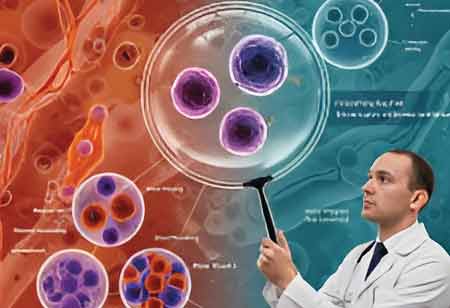Thank you for Subscribing to Healthcare Business Review Weekly Brief
Be first to read the latest tech news, Industry Leader's Insights, and CIO interviews of medium and large enterprises exclusively from Healthcare Business Review
Pioneering Stem Cell Therapies Transforming APAC Healthcare
Advancements In Regenerative Medicine, Such As Stem Cell Therapies And Gene Editing, Offer New Treatment Options And Enhance Our Understanding Of Healing, Potentially Transforming Healthcare In The Future.

By
Healthcare Business Review | Monday, October 06, 2025
Stay ahead of the industry with exclusive feature stories on the top companies, expert insights and the latest news delivered straight to your inbox. Subscribe today.
Fremont, CA: Regenerative medicine is an innovative field that has the potential to transform healthcare by restoring function to damaged tissues and organs. Recent advancements have brought these ambitious goals closer to reality, providing new hope for patients suffering from chronic diseases, injuries, and degenerative conditions. Stem cell therapy is at the forefront of regenerative medicine, with recent improvements enhancing its efficacy and safety. Researchers can now isolate specific types of stem cells from various sources, including adult tissues, umbilical cord blood, and even induced pluripotent stem cells (iPSCs).
Recent clinical trials have demonstrated encouraging results in the treatment of various conditions, including spinal cord injuries, heart disease, and neurodegenerative disorders such as Parkinson’s disease. These findings promise to advance therapeutic approaches in these challenging medical conditions. For instance, a groundbreaking trial demonstrated how injecting iPSCs directly into spinal cord injury sites improved patient motor function recovery. Advancements in gene editing technologies, such as CRISPR, have enabled researchers to enhance the therapeutic potential of stem cells by correcting genetic defects before they are administered to patients. This confluence of stem cell research and genetic engineering holds immense potential for personalized medicine.
Tissue Engineering: Creating Functional Organs
Tissue engineering combines biology, materials science, and engineering techniques to create biological substitutes that restore, maintain, and improve damaged tissues and organs. A significant breakthrough in this area is the development of 3D bioprinting technology, which allows the layered deposition of living cells to fabricate biomimetic structures that closely resemble natural tissues.
Recent innovations have created functional tissue constructs for various applications, including skin grafts for burn victims, cartilage for joint repair, and even miniaturized organ models for drug testing. For example, researchers have successfully printed human skin for patients with severe wounds in clinical settings. Furthermore, advances in vascularization techniques have improved the ability to integrate these engineered tissues into the body, enhancing their survival and functionality.
Gene Editing: A New Frontier In Regenerative Medicine
Gene editing technologies are revolutionizing regenerative medicine by enabling precise modifications to the genetic material within living cells. CRISPR-Cas9, in particular, has garnered attention due to its simplicity and efficiency. This technology allows researchers to target specific genes for editing, paving the way for potential treatments for genetic disorders where traditional approaches have been limited.
Recent studies have demonstrated the ability of gene editing to correct mutations responsible for conditions such as sickle cell disease and muscular dystrophy. For instance, scientists have successfully used CRISPR to modify hematopoietic stem cells from patients with sickle cell disease, producing healthy red blood cells after transplantation. Moreover, gene therapy combined with stem cell approaches has shown promise in treating certain cancers by enhancing the body’s immune response.






